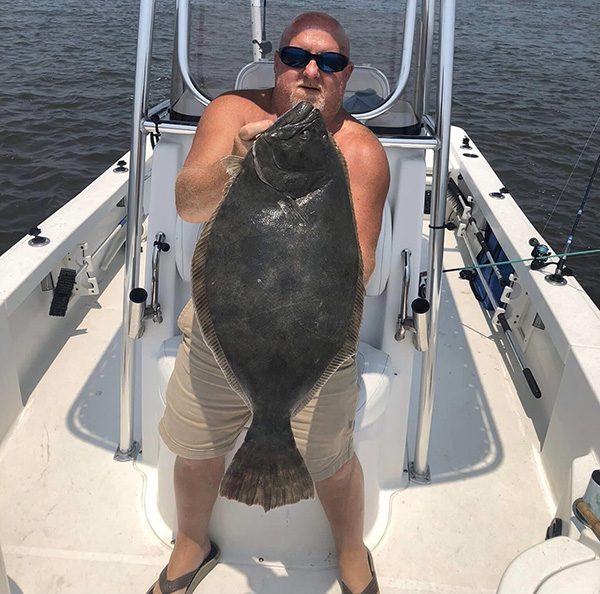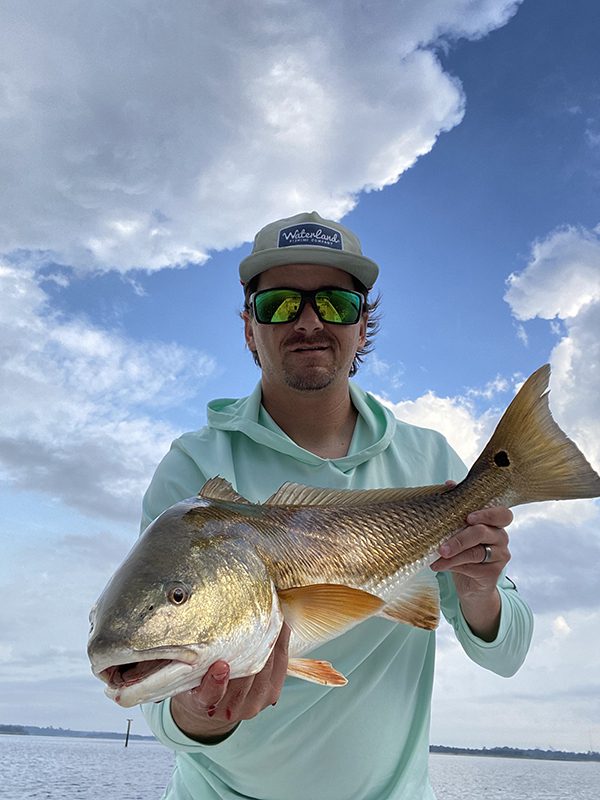Carolina Beach – September 2023
Andrew, of Island Tackle and Hardware, reports that a bunch of redfish are being caught inshore both in the river and around ICW areas. Some anglers have even found some over-slot fish in Snows Cut.
Black drum have been feeding well around hard structures in the Cape Fear River.
Some big sheepshead are being caught around the Snows Cut Bridge and other deeper-water structures.
A few more speckled trout have started showing up, but this is still largely a bite that is only found in the early mornings.
Flounder are being caught as bycatch in many of these same areas.
Water temperatures inside are still hovering around 90 degrees, and fishing will pick up as that number starts to drop.
Surf fishing has been steady through these summer months. Anglers are catching a mixed bag of croakers, spanish mackerel, bluefish, pompano, and spot.
The local piers are finding the same species as the surf anglers, and the piers are also adding some king mackerel and the occasional tarpon.
Nearshore anglers are catching scattered king mackerel along the beach on out to 20 miles.
The bottom fishing out in 80’+ areas has been producing a mix of black sea bass, grunts, triggerfish, and amberjack.
Christian, of Seahawk Inshore Fishing Charters, reports that anglers on recent trips have been finding pretty good numbers of red drum. Fishing live finger mullet on jig heads or on Carolina rigs has produced most strikes, and the tide hasn’t mattered much. A bunch of smaller fish (21-22”) are around, with over-slot and upper-slot fish mixed in.
The flounder bite remains steady, with the flatfish hitting the same live mullet fished along the bottom. Most of the flatfish have been up on shallow flats or in deep waters with current.

John Heffner, of Wilmington, hooked this 27″ flounder on a live pogie. He was fishing in the ICW near Snows Cut.
Luke, of Spot On Charters, reports that the area is still seeing a really good flounder bite. Look for the flatfish around points and creek mouths, and live bait will produce the larger fish that are around.
Red drum action is steady. The action has mostly seemed to come in waves and is only getting better with all the bait moving around as we start to head into fall. Target choke points and the deeper channels with oyster beds, and the presence of some current in these areas is key for holding fish.
A bunch of shrimp are around, and the shrimp have brought with them a better speckled trout bite. The early mornings, with the slightly cooler conditions, continue to be best.
Tommy, of Mungo Fishing Charters, reports that the red drum bite continues to be really good even in these hot summer months. Anglers are having success with both live and artificial baits fished in creeks, shallow bays, and around the inlet. The finger mullet have started to show up in really good numbers, and they have made a great bait option to use in any of the target areas.
The speckled trout bite has also been pretty solid when fishing topwater plugs and D.O.A. soft plastics in the low-light hours. Some bigger fish are mixed in, and they’re mostly striking at live menhaden and cut bait.
Mason, of Grand Slam Fishing Charters, reports that anglers are having a lot of success targeting red drum along oyster beds at lower tides, and then moving up on shallow flats with rising water.
The reds are holding in smaller groups (2-3 fish), and finding areas holding bait really helps narrow down your target areas. Live and cut mullet have both been the top producing baits to match what’s in the area.
Some flounder are being caught using the same tactics to target reds.
Speckled trout are in the area, though anglers targeting them have had to be on the water really early.

Capt. Davidson Turner, of Tide On Inshore Charters, hooked this 29″ red drum using a black and gold Skitter Walk. He was fishing in the Cape Fear River near Carolina Beach.
Rod, of OnMyWay Fishing Charters, reports that water temperatures are still in that 84-85 degree range, and this has the fish scattered just about everywhere.
Spanish mackerel fishing has been up or down. There are a bunch of smaller, summertime fish (with some 3+ lb. spanish mixed in). These schools have almost exclusively been holding deeper, down in the 20-40’ range, as surface-feeding action seems scattered at best. Spoons fished behind #1 or #2 planers continues to produce the most strikes.
King mackerel are pretty scattered from the beach out to 50 miles. With the king mackerel action, it is really all about finding bait. Find the food source, and you can find fish.
Mahi are scattered around our nearshore waters, with the larger gaffer fish mostly out in the Gulf Stream. The nearshore mahi are holding in smaller groups of 1-3 fish.
Out at the break, anglers can have success pulling baits over live bottoms in the 120-150’+ range (25-30 miles). Wahoo and some nice sailfish have made up the majority of the action in these areas.
Bottom fishing remains a really good option for catching fish in these hot conditions. Anglers are seeing a huge variety of fish, including vermilion snapper, grunts, black sea bass, gag grouper, barracuda, and plenty of amberjacks.
The deeper bottom areas will also see the addition of triggerfish and some nice-sized scamp grouper.
Jeremiah, of Kure Beach Pier, reports that with hot water temperatures still all too common, bottom fishing has been producing mostly whiting and croakers.
Spanish mackerel are in the mix for anglers looking to sight-cast plugs.
